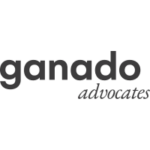-
Does your jurisdiction have an established renewable energy industry? What are the main types and sizes of current and planned renewable energy projects? What are the current production levels? What is the generation mix (conventional vs renewables) in your country?
Germany has a well-established and rapidly growing renewable energy sector, supported by a robust legal framework at both the national and EU levels. A cornerstone of this framework is the Renewable Energy Sources Act (Erneuerbare-Energien-Gesetz, EEG), first adopted in 2000 and most recently amended in 2023. It guarantees priority access to the power grid for renewable energy sources and includes financial mechanisms to promote their development. Compliance is aligned with Directive (EU) 2018/2001 (Renewable Energy Directive II, RED II) and the Federal Climate Change Act (Bundes-Klimaschutzgesetz, KSG), which sets binding greenhouse gas reduction targets.
Germany’s renewable energy portfolio is broad and diverse:
- Onshore Wind Energy: Currently around 64.4 GW of installed capacity, with a target of 115 GW by 2030 under the Energy Sources Act (Erneuerbare-Energien-Gesetz, EEG).
- Offshore Wind Energy: Installed capacity of 9.2 GW, with legally binding targets of 30 GW by 2030 and up to 70 GW by 2045.
- Photovoltaics (PV): Approximately 99.3 GW currently installed; the 2030 target is 215 GW.
- Biomass and Biogas: Around 8.7 GW, primarily used in combined heat and power plants (Kraft-Wärme-Kopplung, KWK).
- Hydropower: Roughly 4.8 GW, mostly from small-scale plants with limited expansion potential due to geographic constraints.
Project sizes in the renewable energy sector range from utility-scale offshore wind farms (e.g. “Baltic Eagle”, “Gode Wind”) and large photovoltaic parks to decentralized generation systems such as rooftop PV installations and agricultural biogas plants. Germany is also a pioneer in large-scale battery storage and green hydrogen projects.
In 2024, electricity generation from renewable sources in Germany reached about 254.9 TWh, which corresponds to about 59% of the net public electricity generation in the country. This made renewable energies the most important energy source for electricity supply in Germany over the whole year. Of all the energy sources, wind turbines contributed the largest share to total generation: offshore wind accounted for 25.7 TWh (2023: 23.5 TWh) and onshore wind for 111.9 TWh (2023: 118.8 TWh). Photovoltaic systems added 63.3 TWh to the grid (2023: 55.7 TWh). 36.0 TWh came from biomass (2023: 37.8 TWh). In addition to the above-average number of hours of sunshine in the summer, the expansion of installed capacity also contributed to the strongest increase in photovoltaics. This means that 2024 also marks a record year for renewably generated electricity. Generation from conventional sources totalled 176.8 TWh, down 10.9 % from the previous year. Nuclear power was completely phased out in April 2023.
-
What are the key developments in renewable energy in your country over the last 12 months?
Over the past 12 months, Germany has taken important steps toward expanding renewable energies. With Solar Package I (Solarpaket I), amendments to the Renewable Energy Act (Erneuerbare-Energien-Gesetz, EEG), and simplifications to wind energy legislation, key legal frameworks have been improved, particularly to speed up planning and approval procedures for new energy projects. New subsidy programs, such as the Federal Subsidy for Efficient Buildings (Bundesförderung für effiziente Gebäude, BEG), provide targeted support for heating system replacement and PV expansion. The hydrogen strategy (Nationale Wasserstoffstrategie) has been fleshed out, the H₂ core network has been approved, and major infrastructure projects such as “SuedLink” and new large-scale battery storage facilities are being pushed forward.
-
What are your country's net zero/carbon reduction targets? Are they law or an aspiration?
Germany’s climate targets are not just declarations of intent. Rather, they were first enshrined in the Federal Climate Protection Act (Bundes-Klimaschutzgesetz, KSG) in December 2019 and most recently amended in July 2024 to tighten sectoral budgets and enforce annual caps. This makes them legally binding for all major economic sectors (energy, transport, buildings, agriculture, etc.).
Specifically, these targets are:
- 65% reduction in greenhouse gas emissions by 2030 (compared to 1990 levels)
- 88% reduction by 2040 (compared to 1990)
- Net-zero emissions by 2045, with net-negative emissions after 2050
In addition, in March 2025, the German constitution, the Basic Law (Grundgesetz, GG), was amended to allow for additional debt of up to 500 billion euros to achieve “climate neutrality by 2045”. This further strengthened Germany’s commitment to net neutrality, underscores the nation’s dedication to climate action, and enhances the legal standing of its climate targets.
-
Is there a legal definition of 'renewable energy' in your jurisdiction?
Section 3 (Definitions) of the Renewable Energy Act (Erneuerbare-Energien-Gesetz, EEG) defines renewable energy as energy produced from renewable sources such as: wind energy (onshore and offshore), solar energy (photovoltaic and concentrated solar power), biomass (including biogas, solid biomass, and liquid biomass), hydropower (from flowing water), geothermal energy (heat derived from within the Earth), or other renewable energy sources such as ocean energy and tidal energy.
-
Who are the key political and regulatory influencers for renewables industry in your jurisdiction? Is there any national regulatory authority and what is its role in the renewable energy market? Who are the key private sector players that are driving the green renewable energy transition in your jurisdiction?
The energy transition in Germany is largely shaped at the federal level, with the federal government (Bundesregierung) as the most important decision maker. The Federal Ministry for Economic Affairs and Energy (Bundesministerium für Wirtschaft und Energie) is the central player in energy policy and legislative initiatives. It is supported by the Bundestag and, in particular by the Committee on Climate Protection and Energy (Ausschuss für Klimaschutz und Energie). The Federal Ministry for the Environment (Bundesumweltministerium) is responsible for climate protection laws, such as the Federal Climate Protection Act (Bundes-Klimaschutzgesetz, KSG) with its binding CO₂ targets. The Federal Network Agency (Bundesnetzagentur, BNetzA) acts as the national regulatory authority. It regulates access to the electricity and gas grids, organizes tenders for wind and solar power plants, and ensures fair competition. The Federal Environment Office (Umweltbundesamt) is responsible for environmental impact assessments, while the German Energy Agency (Deutsche Energie-Agentur, dena) provides strategic advice on the energy transition. The KfW Bank (Kreditanstalt für Wiederaufbau) promotes investment in renewable energies through low-interest loans and grants.
In addition, many private sector players are actively driving the energy transition in Germany. Leading energy companies (including RWE, EnBW and E.ON) are strategically repositioning themselves and investing heavily in wind, solar, and storage projects. RWE, for example, has transformed itself from a lignite company into one of Europe’s largest developers of offshore wind farms. EnBW is planning a massive expansion of solar and wind power, particularly in southern Germany. E.ON is focusing on modern network infrastructure, digital energy services, and smart energy solutions for private homes – including solar systems and EV charging stations.
-
What are the approaches businesses are taking to access renewable energy? Are some solutions easier to implement than others? If there was one emerging example of how businesses are engaging in renewable energy, what would that be? For example, purchasing green power from a supplier, direct corporate PPAs or use of assets like roofs to generate solar or wind?
Companies in Germany are pursuing different approaches to gaining access to renewable energies, depending on their size, industry, and strategic orientation. One of the simplest and most widespread measures is to purchase certified green electricity from an energy supplier. This step requires little administrative effort, can be implemented at short notice, and is particularly attractive for small and medium-sized companies. For example, the outdoor company VAUDE (a German manufacturer of outdoor equipment) uses 100% green electricity for its headquarters, which makes a key contribution to its climate strategy.
More complex, but also more effective, are power purchase agreements (PPAs) – long-term electricity supply contracts with renewable energy operators. Such contracts offer planning security for energy prices and at the same time promote the expansion of new plants, especially those without Renewable Energy Act (Erneuerbare-Energien-Gesetz, EEG) subsidies. The technology group Bosch, for example, has signed a PPA with the energy company RWE to purchase electricity from a solar park built specifically for this purpose.
A third approach is to generate electricity in-house using photovoltaic or, less commonly, wind power systems on company-owned land such as roofs or parking lots. This solution offers long-term cost advantages and increases independence from price fluctuations on the energy market. The Selatec GmbH, a medium-sized machine manufacturer, already generates around 30 % of its electricity requirements in this way.
-
Has the business approach noticeably changed in the last year in its engagement with renewable energy? If it has why is this (e.g. because of ESG, Paris Agreement, price spikes, political or regulatory change)?
Yes. In recent years, there has been a significant shift in the business approach of companies in Germany towards renewable energy. This shift is being driven by a combination of regulatory, economic, and strategic factors. Key legislative developments – such as the amendments to the Renewable Energy Act (Erneuerbare-Energien-Gesetz, EEG) have set clearer obligations and targets. At the European level, stricter frameworks such as the Corporate Sustainability Reporting Directive (CSRD) and the EU taxonomy are forcing companies to reassess their sustainability strategies.
Economic pressures also play an important role. Persistently high energy prices, driven in large part by geopolitical tensions such as the war in Ukraine, and rising carbon costs have made renewable energy attractive not only environmentally but also financially. At the same time, investors and customers are exerting increasing pressure through environmental, social, and governance (ESG) expectations.
Major corporations – including RWE, E.ON, Siemens and Volkswagen – are responding by investing billions in wind and solar power, battery storage, grid infrastructure, and electric mobility. Industrial players such as BASF are focusing on green hydrogen, while small and medium-sized enterprises are increasingly seeking energy independence through on-site renewable solutions, motivated by cost efficiency and climate goals.
Financial institutions are also facilitating this transition by offering green financial products and reshaping their investment portfolios. Across all sectors, a broad strategic shift is underway to accelerate decarbonisation and ensure a more resilient and sustainable energy supply.
-
How visible and mature are discussions in business around reducing carbon emissions; and how much support is being given from a political and regulatory perspective to this area (including energy efficiency)?
The debate about reducing CO₂ emissions and improving energy efficiency is now very visible in the German economy. In many business sectors – especially in the energy and industrial sectors – climate protection is an integral part of strategic decision-making. Companies are increasingly recognizing that investing in CO₂ reduction is not only necessary for the environment, but also makes good business sense. However, there are differences between sectors: While the energy industry is making great strides thanks to the massive expansion of renewable energy, the transportation and building sectors, for example, still have a long way to go.
Politically, the transition is being supported by numerous measures: The national CO₂ price, the German Climate Protection Act (Bundes-Klimaschutzgesetz, KSG) with binding reduction targets and targeted support programs (e.g. for industry, buildings or hydrogen projects) create a fundamentally sound framework. The EU is also exerting a strong regulatory influence with its “Fit for 55” package as part of the EU Green Deal and emissions trading. However, companies complain about red tape, high energy costs, and uncertain political conditions, which often make implementation difficult.
-
How are rights to explore/set up or transfer renewable energy projects, such as solar or wind farms, granted? How do these differ based on the source of energy, i.e. solar, wind (on and offshore), nuclear, carbon capture, hydrogen, CHP, hydropower, geothermal; biomass; battery energy storage systems (BESS) and biomethane?
In Germany, research, construction, and operation of energy projects are subject to strict legal regulations. The specific permits required will always depend on the type, size and location of the project.
- Solar and onshore wind projects typically require private land contracts and building permits (Baugenehmigung), and in some cases environmental impact assessments (Umweltverträglichkeitsprüfung).
- Offshore wind farms are awarded through tenders in designated zones. There are extensive requirements in terms of spatial planning, environmental and safety standards.
- Geothermal and CCS projects are subject to mining and water law requirements. Depending on depth and location, different authorities and permits are required, including environmental impact assessments (Umweltverträglichkeitsprüfung) and nature conservation requirements (Naturschutzauflagen).
- Hydropower projects require water law approval (wasserrechtliche Genehmigung) and a building permit (Baugenehmigung). An environmental impact assessment (Umweltverträglichkeitsprüfung) is also usually mandatory.
- Biomass and biogas projects usually require a building permit (Baugenehmigung) and in most cases an immission control permit (Immissionsschutzgenehmigung).
- Combined heat and power (CHP) plants usually require a building permit (Baugenehmigung) and sometimes a permit under the Federal Immission Control Act (Bundesimmissionsschutzgesetz, BImSchG).
- Battery storage systems generally require a building permit (Baugenehmmigung); depending on their size and type, additional permits may be required, e.g. under the Federal Immission Control Act (Bundesimmissionsschutzgesetz, BImSchG).
- Hydrogen projects are subject to various permitting requirements depending on their type and scope, in particular under the Federal Immission Control Act (Bundesimmissionsschutzgesetz. BImSchG) and the Ordinance on Industrial Safety and Health (Betriebssicherheitsverordnung, BetrSichV).
- Due to the phase-out of nuclear energy, the focus is now on the decommissioning of existing facilities. The decommissioning, safe enclosure, and dismantling of a nuclear power plant require a license in accordance with the German Nuclear Energy Act (Atomgesetz, AtG).
-
Is the government directly involved with the renewables industry (auctions etc)? Are there government-owned renewables companies or are there plans for one?
The German government plays a key role in the renewable energy sector by setting the regulatory framework, launching project tenders, and providing financial incentives. The expansion is mainly driven by the Renewable Energy Act (Erneuerbare-Energien-Gesetz, EEG) through instruments such as technology-specific auctions, feed-in tariffs, and subsidy programs. The Federal Network Agency (Bundesnetzagentur, BNetzA) regularly puts large amounts of wind and solar capacity out to tender. There are no dedicated state-owned renewable energy companies. The government holds temporary stakes in companies such as Uniper and SEFE, which were acquired primarily for energy security reasons. Their involvement in renewables is limited.
-
What are the government’s plans and strategies in terms of the renewables industry? Please also provide a brief overview of key legislation and regulation in the renewable energy sector, including any anticipated legislative proposals?
The German government is pursuing an ambitious strategy to accelerate the energy transition with the overall goal of achieving climate neutrality by 2045 at the latest. At the heart of this transition are the rapid expansion of renewable energy sources, the development of a competitive hydrogen economy, the modernization of the electricity grid, and the creation of flexible reserve capacities to ensure a secure and independent electricity supply.
The legal basis for the implementation of these goals is provided primarily by the Climate Protection Act (Bundes-Klimaschutzgesetz, KSG) and the Renewable Energy Act (Erneuerbare-Energien-Gesetz, EEG). Section 3 of the Climate Protection Act enshrines Germany’s commitment to greenhouse gas neutrality by 2045. In addition, Section 1 of the Renewable Energy Act stipulates the goal that the electricity supply must be entirely based on renewable energies. The amendment to the Renewable Energy Act of 2023 and the revisions planned for 2025 place greater emphasis on efficiency, cost-effectiveness, and, in particular on accelerating planning and approval procedures. The 2023 version of the Renewable Energy Act gives renewable energy priority over other interests in the decision-making process.
For onshore wind energy, the Wind Energy Area Requirement Act, (Windenergie-Flächenbedarfsgesetz, WindBG), which was introduced in 2022, requires the federal states (Bundesländer) to set binding area targets. By 2027, at least 1.4% of the country’s land area must be designated for wind energy, rising to at least 2% by 2032. At the same time, the Federal Nature Conservation Act (Bundesnaturschutzgesetz, BNatSchG) has been amended to streamline and standardize species protection assessments (Artenschutzprüfung) nationwide, thereby speeding up the approval process. An important lever for reducing bureaucracy is the Pact for Accelerated Planning, Approvals, and Implementation (Pakt für Planungs-, Genehmigungs- und Umsetzungsbeschleunigung), in which the federal and state governments (Bundes- und Landesregierungen) agreed on 150 individual measures, many of which are aimed at expanding renewable energies. The effect was immediate: in 2024, 50% more GW of capacity was approved than in the previous record year of 2016.
The development of offshore wind energy is regulated by the Offshore Wind Energy Act (Windenergie-auf-See-Gesetz, WindSeeG), which sets ambitious targets: 30 GW by 2030, at least 40 GW by 2035 and 70 GW by 2045. The law includes numerous measures to simplify procedures, such as eliminating the need for planning approval in areas that have already been assessed and shortening the deadlines for environmental impact assessments and approval procedures.
The federal government (Bundesregierung) is also pushing to simplify the expansion of photovoltaics. The Solar Package I (Solarpaket I), which was passed in 2024, simplifies the installation of balcony PV systems, promotes electricity models for tenants and community energy projects, and streamlines approval procedures for roof-mounted and ground-mounted systems.
With the National Hydrogen Strategy (Nationale Wasserstoffstrategie), the federal government (Bundesregierung) has outlined a roadmap for building a hydrogen economy. The goal is to establish a hydrogen network of more than 1,800 kilometres by 2027/2028. The draft Hydrogen Acceleration Act (Wasserstoffbeschleunigungsgesetz), which has not yet been enacted, creates the legal framework for this. It accelerates, simplifies, and digitalizes the relevant planning, approval and procurement processes and reduces the regulatory requirements.
The new federal government (Bundesregierung), which took office at the beginning of May 2025, has made it clear that it intends to press ahead with the expansion of renewable energies – with a strong focus on simplification and faster planning procedures. The overall goal is to make the energy transition economically viable while significantly reducing the administrative burden on businesses and citizens and streamlining processes.
-
Are there any government incentive schemes promoting renewable energy (direct or indirect)? For example, are there any special tax deductions or subsidies (including Contracts for Difference) offered? Equally, are there any disincentives?
Germany has a wide range of government subsidy programs for renewable energies. At the federal level, private individuals and companies can obtain grants and loans for heat pumps, biomass heating systems, and solar thermal energy through the Federal Subsidy for Efficient Buildings (Bundesförderung für effiziente Gebäude, BEG), among other programs. The KfW Bank (Kreditanstalt für Wiederaufbau) offers low-interest loans and repayment subsidies for photovoltaic, wind, hydroelectric, and biomass systems. The Federal Office for Economic Affairs and Export Control (Bundesamt für Wirtschaft und Ausfuhrkontrolle, BAFA) provides subsidies specifically for solar thermal, biomass, and heat pump heating systems. There are also indirect tax incentives: private individuals, for example, benefit from energy-efficient renovation (Section 35c of the Income Tax Act [Einkommensteuergesetz, EStG]), which allows a tax reduction of 20% of the costs – up to 40,000 euros per property. Another new approach is the German government’s climate protection agreements, which are designed to provide financial relief to companies in emission-intensive industries as they switch to climate-friendly technologies. In addition, many federal states (Bundesländer) and municipalities offer additional bonuses for photovoltaics and electricity storage. For example, large cities such as Munich and Cologne subsidize the purchase of PV systems and electricity storage systems with up to 300 euros per kWh of storage capacity. Despite this wide range of support, the expansion of renewable energies in Germany remains challenging – due, among other things, to lengthy approval procedures, sluggish power grid expansion, and a complex legal framework.
-
How does the structure of the natural gas industry in your country impact the price of electricity? Are there any plans to de-link the price of renewable electricity from gas prices?
The structure of the natural gas industry in Germany significantly impacts the price of electricity due to the merit-order system. In this system, electricity prices are set by the cost of the most expensive energy source used to meet demand, which is often natural gas-fired power plants. When gas prices increase, the cost of generating electricity from these plants rises, causing overall electricity prices to increase, even when renewable energy generation remains high. As gas-fired power plants are frequently used to balance supply and demand, fluctuations in gas prices directly influence electricity prices in the wholesale market.
To address this issue, there are efforts underway to de-link renewable electricity prices from gas prices. One potential solution is reforming the wholesale electricity market to separate the price of renewable energy from fossil fuels. This could involve mechanisms like Contracts for Difference (CfDs), where renewable energy producers are guaranteed a fixed price for their electricity, regardless of market fluctuations. Other initiatives include promoting energy storage solutions and smart grids to reduce reliance on gas for balancing supply and demand of electricity, as well as increasing the use of green hydrogen, which could replace natural gas in various sectors and reduce the overall impact of gas price volatility.
-
What are the significant barriers that impede both the renewables industry and businesses' access to renewable energy? For example, permitting, grid delays, credit worthiness of counterparties, restrictions on foreign investment, regulatory constraints on acquisitions; disputes/challenges?
The expansion of renewable energy in Germany faces a number of structural, regulatory, and societal challenges that are significantly slowing progress. One of the most pressing issues is the lengthy and complex approval process, especially for large-scale projects such as wind and solar farms. Bureaucratic hurdles often lead to significant delays in both planning and implementation.
In addition, existing grid infrastructure is often ill-equipped to handle the distributed nature of renewable energy production. Bottlenecks in grid expansion and delays in connecting new installations to the grid remain major obstacles. At the same time, insufficient energy storage capacity limits the ability to fully utilize renewable generation, especially during periods of surplus.
Legal disputes with environmental groups or local communities also pose a significant risk to project timelines, particularly where developments are planned in environmentally sensitive or densely populated areas. Public opposition, particularly to onshore wind farms, can further complicate or even derail projects.
Smaller projects face disproportionate challenges: they are often burdened with relatively high costs and limited access to public support programs. In addition, difficulties in securing financing – due in part to the limited creditworthiness of potential counterparties – make long-term investment and project development more difficult.
Regulatory uncertainty continues to undermine investor confidence. In the absence of a clear and reliable policy framework, many companies remain cautious. Investment conditions are further constrained by national security considerations, which have led to restrictions on foreign ownership and participation in energy infrastructure. For example, Section 15 (2) sentence 1 of the Offshore Wind Energy Act (Windenergie-auf-See-Gesetz, WindSeeG) allows authorities to exclude so-called “non-EU bidders” from offshore wind tenders if their participation is deemed likely to jeopardize public order or national security.
-
What are the key contracts you typically expect to see in a new-build renewable energy project?
There are several key contracts involved in a new-build renewable energy project in Germany. A Power Purchase Agreement (PPA) secures the sale of electricity, specifying price and duration. An Engineering, Procurement and Construction (EPC) contract covers design, procurement, and construction. An Operations and Maintenance (O&M) contract ensures ongoing operation and maintenance after construction. Financing agreements detail the terms of project financing, including loan or bond arrangements. A grid connection agreement governs connection to the electrical grid. Land lease or purchase agreements secure land for the project. Supply contracts cover the delivery of necessary equipment. Insurance contracts cover construction and operational risks. Finally, government support agreements outline the terms of any subsidies or incentives received.
-
Are there any restrictions on the export of renewable energy, local content obligations or domestic supply obligations? What are the impacts (either actual or expected) of the implementation of the Net Zero Industry Act (EU) Regulation 2024/1735?
There are no specific restrictions of this kind in Germany.
German policy aims to achieve greater energy independence by expanding renewable energies. Under EU Regulation 2024/1735 on the “Net Zero Industry Act”, the EU will expand its production capacities for green technologies such as solar and wind power plants with the aim of covering at least 40 % of EU demand by 2030. The regulation promotes faster approval procedures and the increased development of strategic production sites, which should also benefit Germany in strengthening its competitiveness in the global market for green technologies.
-
Has deployment of renewables been impacted in the last year by any non-country specific factors: For example, financing costs, supply chain or taxes or subsidies (e.g. the US's Inflation Reduction Act)?
The expansion of renewable energies has been influenced by national measures and global developments. Russia’s war of aggression against Ukraine has clearly demonstrated Germany’s vulnerability to fossil fuel imports and has brought the importance of an autonomous energy supply, especially from renewable energies, to the forefront of the political debate. In response, the German government unveiled the “Easter Package,” a set of decisive legislative amendments aimed at accelerating approval processes and propelling the expansion of wind and solar energy. The EU launched the “REPowerEU” plan as a comprehensive program to reduce energy dependence. At the same time, other global factors, such as financing costs, supply chain problems, and international subsidy policies, are hampering the concrete implementation of projects.
-
Could you provide a brief overview of the major projects that are currently happening in your jurisdiction?
The expansion of renewable energies in Germany is being driven forward by a series of large-scale projects.
- In the offshore sector, Germany’s largest wind farm to date, “Borkum Riffgrund 3” (913 MW), is being built. Together with “Gode Wind 3” (253 MW), it will start supplying electricity this year – without subsidies from the Renewable Energy Act (Erneuerbare-Energien-Gesetz, EEG). “He Dreiht” (EnBW, 960 MW) will also be realised entirely on a market basis; commissioning is planned for 2027.
- On land, the expansion of wind energy is focused on repowering. In Meppen (65 MW) and Börger/Breddenberg (22.2 MW), modern large-scale turbines are replacing outdated technology. They offer higher efficiency and require less space.
- In Amerdingen and Darstadt (each over 70 MWp), large-scale photovoltaic plants are being built with private power purchase agreements (PPAs) to secure financing.
- In the hydrogen sector, BP is building a 100 MW electrolysis plant in Lingen to supply industry. At the same time, RWE is planning to build up to 280 MW of electrolysis capacity by 2027 with GET H₂ In addition, an underground hydrogen storage facility (up to 70 GWh) is being built in Huntorf, which will contribute to security of supply in the future.
- In the energy storage sector, Vitol-backed company VPI is investing 450 million euros in the development of 500 MW of battery storage capacity in north-east Germany.
- The European electricity infrastructure will be strengthened by the “NeuConnect” project: from 2028, a 725-kilometre underwater cable will connect Germany and the United Kingdom. With a transmission capacity of 1.4 GW, the cable will enable the exchange of surplus wind energy, thus contributing to security of supply and better integration of renewable energies at European level.
-
How confident are you that your jurisdiction can become a leader in newer areas like offshore wind or hydrogen?
Germany is well-positioned to become a leader in emerging renewable energy sectors like offshore wind and hydrogen. The country has a strong track record in renewable energy deployment, supported by significant investments, advanced technologies, and comprehensive government support. Germany’s geographic advantages, particularly for offshore wind in the North and Baltic Seas, provide a solid foundation for expansion in this area. With its National Hydrogen Strategy, the German government aims to promote the use of climate-friendly hydrogen. Current plans include the construction of a 9,700-kilometre core network linking ports, storage facilities, power stations, and industrial centres. Around 60 % of this network will be based on repurposed natural gas pipelines.
-
How are renewables projects commonly financed in your jurisdiction?
Renewable energy projects in Germany are typically financed through a mix of equity, loan, and government support. Project finance is often used where funds are raised based on the future cash flows of the project. Bank loans and green bonds are also common. Private equity and infrastructure funds often invest in both the development and operating phases of large-scale renewable energy projects.
The Renewable Energy Act (Erneuerbare-Energien-Gesetz, EEG) is a central pillar of the investment landscape. It guarantees reliable income through market premiums and thus ensures the economic viability of projects. For projects that are not (or no longer) covered by the Renewable Energy Act, corporate power purchase agreements (PPAs) are gaining in importance. These are long-term power purchase agreements that combine financial stability with market proximity. To make these projects a reality, the government needs to use de-risking instruments. The KfW Bank (Kreditanstalt für Wiederaufbau) is providing 270 low-interest loans of up to 150 million euros. The Federal Office of Economics and Export Control (Bundesamt für Wirtschaft und Ausfuhrkontrolle, BAFA) is providing targeted support to small and medium-sized enterprises in their transition to renewable energies. BAFA has numerous funding programs on behalf of the Federal Ministry of Economics and Energy (Bundesminsterium für Wirtschaft und Energie).
-
What is your forecast for the coming year(s) for renewable energy in your jurisdiction?
The renewable energy sector in Germany is expected to grow significantly in the coming years. Onshore wind farms are expected to reach record levels in the coming years due to simplified approval procedures and political support. Strong growth is also expected in the solar energy sector, with up to 215 GW of new capacity expected to be added by 2026. Despite some challenges, such as weather-related disruptions, solar will continue to play an important role in the energy mix. In addition, significant progress is being made in the development of green hydrogen, with projects such as a 280 MW electrolysis plant scheduled to come online in 2027 sending a clear signal of industrial transformation. Germany is clearly focused on decarbonisation and energy independence, which will drive the long-term expansion of renewable energies.
Germany: Renewable Energy
This country-specific Q&A provides an overview of Renewable Energy laws and regulations applicable in Germany.
-
Does your jurisdiction have an established renewable energy industry? What are the main types and sizes of current and planned renewable energy projects? What are the current production levels? What is the generation mix (conventional vs renewables) in your country?
-
What are the key developments in renewable energy in your country over the last 12 months?
-
What are your country's net zero/carbon reduction targets? Are they law or an aspiration?
-
Is there a legal definition of 'renewable energy' in your jurisdiction?
-
Who are the key political and regulatory influencers for renewables industry in your jurisdiction? Is there any national regulatory authority and what is its role in the renewable energy market? Who are the key private sector players that are driving the green renewable energy transition in your jurisdiction?
-
What are the approaches businesses are taking to access renewable energy? Are some solutions easier to implement than others? If there was one emerging example of how businesses are engaging in renewable energy, what would that be? For example, purchasing green power from a supplier, direct corporate PPAs or use of assets like roofs to generate solar or wind?
-
Has the business approach noticeably changed in the last year in its engagement with renewable energy? If it has why is this (e.g. because of ESG, Paris Agreement, price spikes, political or regulatory change)?
-
How visible and mature are discussions in business around reducing carbon emissions; and how much support is being given from a political and regulatory perspective to this area (including energy efficiency)?
-
How are rights to explore/set up or transfer renewable energy projects, such as solar or wind farms, granted? How do these differ based on the source of energy, i.e. solar, wind (on and offshore), nuclear, carbon capture, hydrogen, CHP, hydropower, geothermal; biomass; battery energy storage systems (BESS) and biomethane?
-
Is the government directly involved with the renewables industry (auctions etc)? Are there government-owned renewables companies or are there plans for one?
-
What are the government’s plans and strategies in terms of the renewables industry? Please also provide a brief overview of key legislation and regulation in the renewable energy sector, including any anticipated legislative proposals?
-
Are there any government incentive schemes promoting renewable energy (direct or indirect)? For example, are there any special tax deductions or subsidies (including Contracts for Difference) offered? Equally, are there any disincentives?
-
How does the structure of the natural gas industry in your country impact the price of electricity? Are there any plans to de-link the price of renewable electricity from gas prices?
-
What are the significant barriers that impede both the renewables industry and businesses' access to renewable energy? For example, permitting, grid delays, credit worthiness of counterparties, restrictions on foreign investment, regulatory constraints on acquisitions; disputes/challenges?
-
What are the key contracts you typically expect to see in a new-build renewable energy project?
-
Are there any restrictions on the export of renewable energy, local content obligations or domestic supply obligations? What are the impacts (either actual or expected) of the implementation of the Net Zero Industry Act (EU) Regulation 2024/1735?
-
Has deployment of renewables been impacted in the last year by any non-country specific factors: For example, financing costs, supply chain or taxes or subsidies (e.g. the US's Inflation Reduction Act)?
-
Could you provide a brief overview of the major projects that are currently happening in your jurisdiction?
-
How confident are you that your jurisdiction can become a leader in newer areas like offshore wind or hydrogen?
-
How are renewables projects commonly financed in your jurisdiction?
-
What is your forecast for the coming year(s) for renewable energy in your jurisdiction?
















